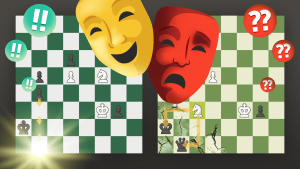
An Opening Line For Club Players
There are certain opening variations in chess which can be labeled "for top players only." The most obvious example would be the Berlin Variation of the Ruy Lopez.
But club players shouldn't be jealous since there are also opening variations "for club players only"!
What's the difference between them?
The main objective of a professional chess player is to maximize his chance for the best possible final result of the game and the tournament. In order to achieve his goal he wouldn't mind to play a boring position or endure hundreds of hours of checking such an opening with a computer.
Meanwhile, most of the club players play chess for fun and they would rather prefer to spend their free time on something more productive than analysis of an endgame after Black's move number 30 in the Berlin Variation.

About five years ago, I wrote a series of articles "Openings For Tactical Players." The objective was to achieve an interesting, attacking position right out of the opening. And this is something most club players love. Unfortunately, some of those openings require a certain amount of opening theory and this is something many club players hate. But fortunately, there are some openings that lead to an entertaining play and also don't require almost any opening knowledge.
One such opening, we discussed here.
Today, I want to talk about another opening line that could be played in your local club. Say you are playing a very solid opponent, who prefers to encounter your 1.e4 move with the French Defense. How can you get an attacking position there? Better yet, how to skip reading the opening books, checking the database and yet surprise your opening expert opponent? The Mieses variation of the French to the rescue!
Don't worry if you've never heard of this variation. It is actually a nameless variation of the French exchange which was frequently played over 100 years ago by one of the strongest players in the world: Jacques Mieses. Here is the starting position of the variation:
White's plan is very straightforward: castle to the queenside (after Nc3 and Qd2) and start pushing his kingside pawns to attack his opponent. Here it is, you've spend a grand total of five seconds to read about White's plan and you are already an expert in this opening!
Here are some Mieses' games that show how it is done:
The combination that finished the following game is very basic and it is a good test for our less-experienced readers. Find the way White checkmated the black king!
The French exchange in general and the Mieses variation in particular might not be the most challenging line for Black in the French Defense. and if Black knows what he is doing, he should be able to equalize the position comfortably (just like many of Mieses' opponents did in the above-mentioned games).
But it shouldn't stop you, if you like adventures on the chessboard. It definitely didn't stop Alekhine in the next game:
Surprise your next opponent (even if it is just a blitz game) with the Mieses variation, and launch a deadly pawn storm on the kingside!

